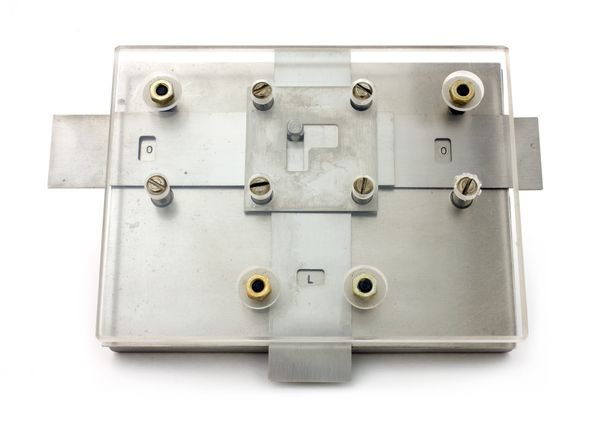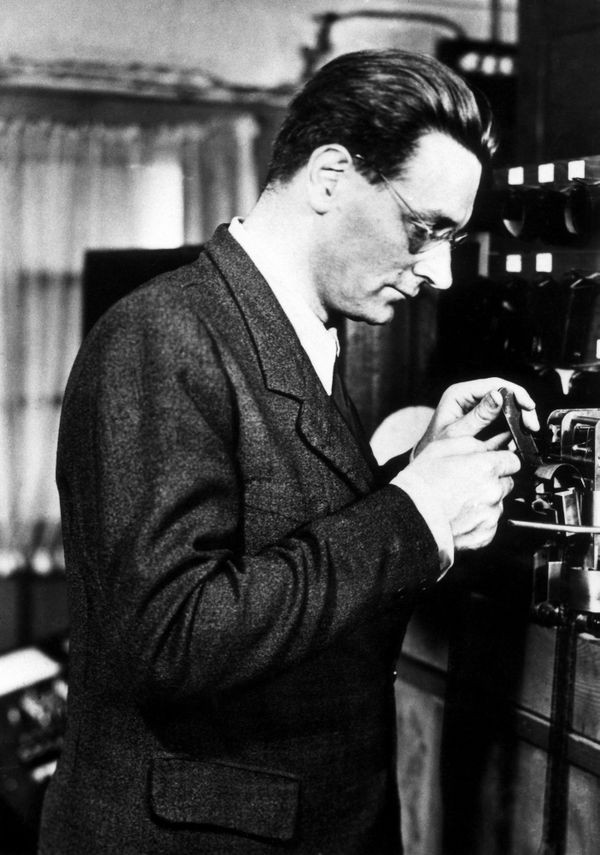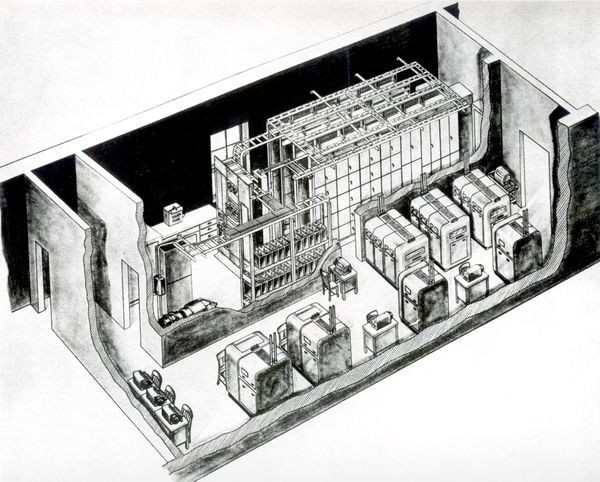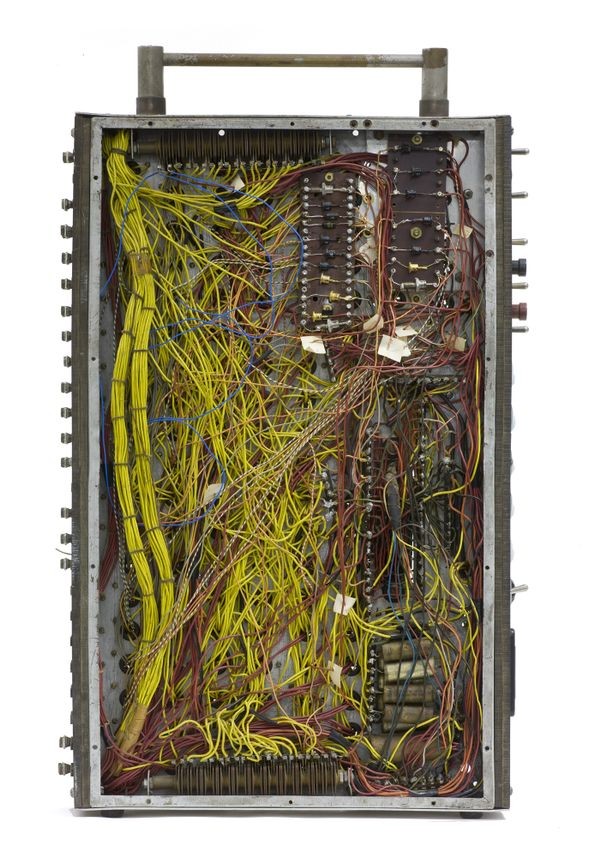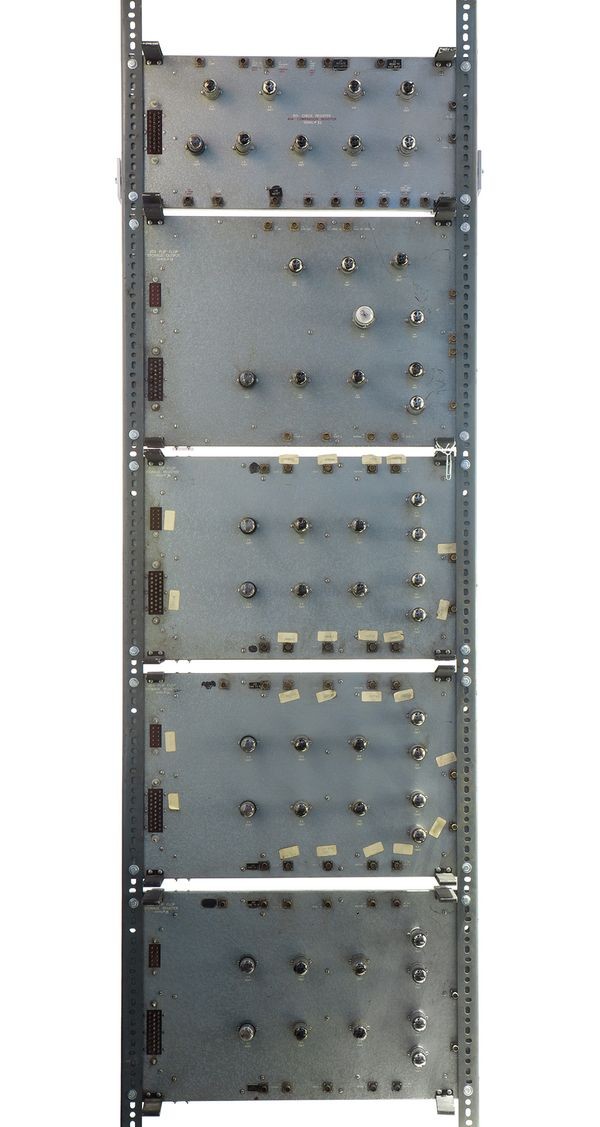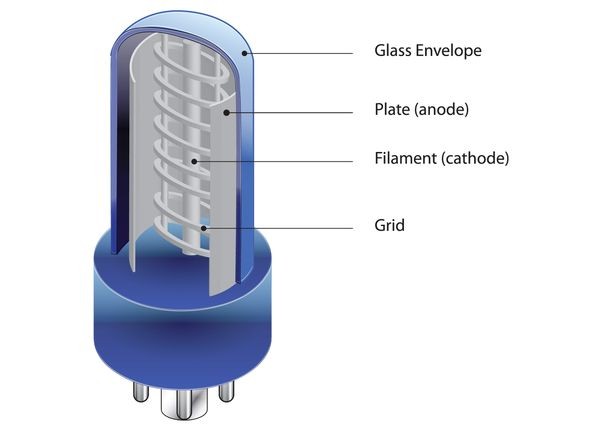Digital Machines
Zuse 1 binary gate (replica)
Calculating machines can be built out of surprising materials. German inventor Konrad Zuse built one in 1936 using mechanical parts like this simple logic gate.
Digital Machines
Digital logic machines may seem the embodiment of 21st century technology. Yet they are centuries old.
The earliest examples used gears, rods, wheels, or sliding plates as switches. Charles Babbage designed several mechanical calculators in the 1800s, and a computer called the “Analytical Engine.” In 1930s Germany, Konrad Zuse built a computer with logic switches made from sliding metal plates and pins.
Konrad Zuse (1910-1995)
Zuse was a brilliant engineer who worked independently to build programmable computers, but his early machines were destroyed in World War II. After the war, his company Zuse KG became a successful computer manufacturer. Zuse was also a prolifi c painter.
View Artifact DetailRelay Switches
Early logic switches were purely mechanical. Relays, by comparison, use mechanical switches that are opened or closed with electromagnets.
George Stibitz used relays in 1937 for a demonstration adder (called “Model K” because he built it on his kitchen table). This led to the Bell Labs “Model 1 Complex Calculator” in 1939. That same year, Konrad Zuse built a computer using 600 relays.
In 1944, IBM built Howard Aiken’s design for the Automatic Sequence Controlled Calculator (Harvard Mark 1) with 3,500 relays—nearly six times the number Zuse used just five years earlier.
Mark I relay calculator
Bell Labs researchers Samuel Williams and George Stibitz built the Model I Relay Calculator with 450 electromagnetic relays. In September 1940, a teletype set up at a mathematics conference at Dartmouth College enabled remote use of this computer.
View Artifact DetailSimon 1 relay logic machine, 1950
Plans to build this simple computer were published in the journal Radio Electronics between 1950 and 1951. The Simon 1 used relay logic and cost about $600 to build.
View Artifact DetailElectronic Vacuum Tubes
Ambrose Fleming patented the two-electrode vacuum tube diode in 1904, which swiftly replaced “cat’s whisker” crystal detectors in early radios. Radio pioneer Lee de Forest added a third electrode in 1906 to create the triode tube, with which he built two key electronic building blocks (amplifiers and oscillators) in 1911.
For decades, the soft glow of vacuum tubes lit up radios and by the 1950s had largely replaced relays as computing switches. The clack of mechanical relays yielded to the hum and heat of power hungry, but far faster tubes.
How a Vaccum Tube Works
Vacuum tubes were developed at the turn of the 20th century. A vacuum tube is an electronic valve (like a faucet) that controls the flow of electricity, allowing a small signal to control a larger one. Tubes can also be used as switches—representing a zero or a one–which is how they were used in early electronic computers. Vacuum tubes use a heated filament, called a cathode, to boil off electrons into a vacuum. These electrons then pass through a grid (or several grids) which control their flow. The electrons then strike the anode (plate) and are absorbed. By designing the cathode, grid(s) and plate properly, the tube will either amplify or switch.
Whirlwind computer rack
The revolutionary MIT Whirlwind computer used about 5,000 vacuum tubes and, in the mid-1950s, was among the most powerful computers in the world.
View Artifact DetailENIAC
The U.S. Army’s ENIAC represented the world’s first large-scale use of electronics for computing. It had about 18,000 vacuum tubes.
View Artifact DetailElements of a Vacuum Tube
By designing the cathode, grid(s) and plate circuits properly, a vacuum tube will either amplify or switch.
View Artifact Detail